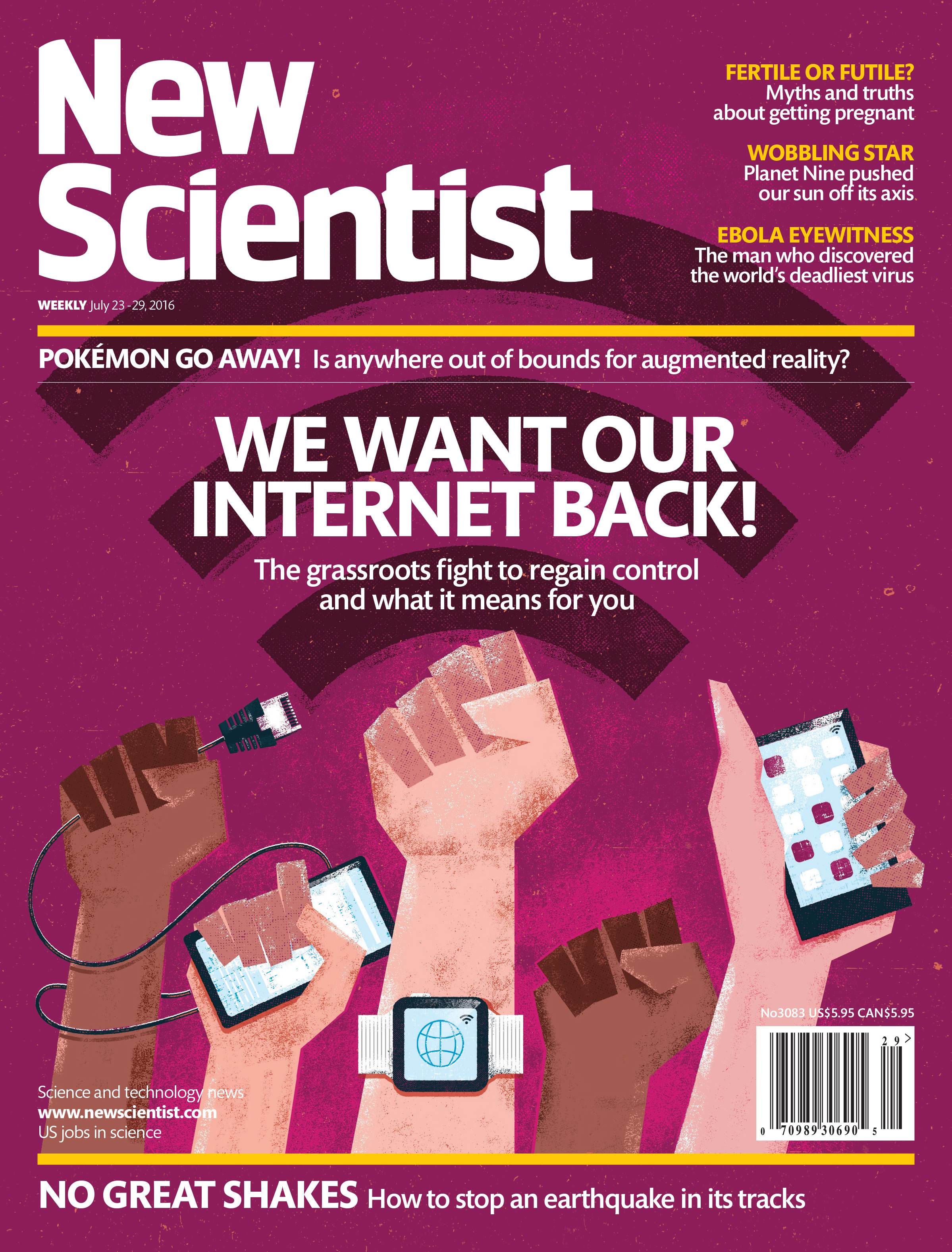- From: Melvin Carvalho <melvincarvalho@gmail.com>
- Date: Thu, 4 Aug 2016 17:25:57 +0200
- To: Kevin Marks <kevinmarks@gmail.com>
- Cc: Social Web Working Group <public-socialweb@w3.org>, Known Kevinmarks <known.kevinmarks.com.331431@quill.p3k.io>
- Message-ID: <CAKaEYhLPthfz9g2javvjy75iQgeOb_pXn-mx3OR+i-3-f5-ViQ@mail.gmail.com>
On 2 August 2016 at 22:51, Kevin Marks <kevinmarks@gmail.com> wrote: > A friend showed me this week's New Scientist on Saturday, and this was the > cover: > > > "We want our internet back - The grassroots fight to regain control and > what it means for you" > > I assumed this would be based on the Decentralized Web Summit, and hoped > it might mention indieweb and the Social Web Working Group's recent Drafts. > > “Very big and powerful companies own a huge chunk of what happens on the > web,” says Andrei Sambra, a developer with the World Wide Web (W3) > Consortium at the Massachusetts Institute of Technology, the main standards > organisation for the web. But we – the ones producing this valuable data – > have lost control. > > The time has come to push back. Sambra is part of a growing movement to > wrest back control > > > then: > > In a sense, that would be just getting back to the way the web was always > intended. The original World Wide Web, invented by Tim Berners-Lee at the > particle physics centre CERN near Geneva in 1999, was a “decentralised” > affair. There were no central servers; websites ran on individual machines > in universities, offices and bedrooms. Hosting a site just meant plugging a > computer into your internet connection and having it serve up the HTML code > to anyone visiting. No one company ruled the roost. > > Simple open protocols meant that anyone who knew what they were doing > could be a part of the burgeoning network. “A lot of the things that made > the early web wonderful were these open standards,” says Harry Halpin, also > with W3C. “This allowed a level of decentralisation, and lack of monopoly > control of the web.” > > It sounds utopian, and in many ways it was – but far too fiddly for most > people to faff about with. Those open protocols are still there. But we > were lured away by convenience. > > > After more explanation of how silos are taking over, I was expecting a > mention of the SWWG from the 2 w3c people quoted. But no. > > Sambra is working on a project called Solid, which is led by none other > than Berners-Lee himself. The idea behind this prototype software is to > separate our data from the apps and servers that process it. With Solid, > you get to decide where your data lives – on your phone, a server at work, > or with a cloud provider, as it probably does now. You can even nominate > friends to look after it. “We want to put the data in a place where the > user controls it,” says Sambra. > > It talks more about Solid, and about Maidsafe, another interesting > project, but not a standard. Then, Harry again: > > The answer, says Halpin, is for the developers working on different parts > of the distributed web to start talking to each other about their work, > something that doesn’t currently happen. “The community has to get together > with the adequate expertise and solve these hard problems and push open > standards,” he says. Open standards will make it easier for talented > developers to build applications without having to go through existing > networks. > > > I thought we were talking to each other. We have multiple specs going > through CR at the moment. How did this story not get told? > > > > Most of the technology behind solid is already at W3C REC stage. It builds on standards such as websockets, SPARQL and LDP, which itself builds on standards such as Turtle and JSON-LD, which in turn builds on standards such as RDF. And at the same time it's possible to take individual parts of the stack and use them in isolation. I would estimate that the work outside solid in the WG is some years behind where there components of solid. This whole process has been run before in terms of creating a robust data format, transferring it, then realizing that querying is useful, moving towards reading and writing data, multiple serializations, transformers, preventing collisions through namespacing, backwards compatibility with the existing web. It's a very mature set of w3c specs, and pretty much the only way to do it robustly that we know of. This is a stack that can compete on equal footing with the likes of facebook graph and google, and go far beyond. I can solve use cases unimaginable with solid that other technologies fall over with. Perhaps the interview process in new scientist was a bit mangled, but I think the content from what I see sounds pretty decent. I think the main problem here is that many people in the WG have not seen what Solid can do. This is where I commend the push towards dogrooding. I think the level of maturity would be quite surprising to those that give it a try.
Attachments
- image/jpeg attachment: nsc_20160723.jpg

Received on Thursday, 4 August 2016 15:32:14 UTC